| Feb 27 |
Archive for the 'Uncategorized' CategoryTouring Northern IrelandI’m just back from a week-long tour of Northern Ireland – the Scottish Friendly Children’s Book Tour, organised by the wonderful Beth and Tom of the Scottish Book Trust, with the help of Book Trust Northern Ireland. And I had a brilliant time! I visited pupils from 13 different schools, in ten different events, ie two events a day from Monday to Friday. I read scenes from the first and sometimes the second Spellchasers books, and occasionally a bit of a Fabled Beast Chronicle too. I also chatted about how stories worked, and told a myth, legend or folktale in every school as well. I had a wonderful time in each school, and I can (almost) remember what we did in each session:
Hollybush Primary in Culmore: This time I told a Scottish folktale, one I tell at home all the time, but it felt quite strange taking a Scottish story across the sea, almost like being an ambassador for Scottish trad tales! Also, it turns out that they don’t call potatoes ‘tatties’ in Northern Ireland… St Joseph’s Primary in Dunloy: Their hall had a very echoey wooden floor and I was wearing very clunky boots, so after consulting the P4s (always wise people to consult) I took my boots off and did the whole session in my socks. I told a Viking myth, which meant that I got to be Loki in stocking soles and sneak around like a real god of mischief. St Patrick’s Primary in Glenariff: they were reading Wolf Notes, and the hall was filled with wonderful pictures of wolves! (And centaurs…) Also, a pupil called Molly was our guide round the school, and she was remarkably relaxed about how badly I treat the Molly in Spellchasers… St Comgall’s Primary in Antrim: This session started with a witch chasing a phoenix, and ended with an amazing Q&A session in which a P6 girl asked a question that I’ve never been asked before, and as I thought my way round an answer I found myself having an idea for a new novel while standing in front of 290 primary pupils… Phoenix Integrated Primary in Cookstown and St Patrick’s Primary from Monymore: I couldn’t help myself. I was in a school called PHOENIX Primary, so I chatted to them about Catesby, the phoenix in Fabled Beast Chronicles, and we also come up with lots of exciting cliffhangers, not all of them about fiery birds! Carrick Primary in Lurgan: The Carrick pupils created a story by trapping a tiger in a cage, but the tiger kept (almost) escaping. It was a relief that we reached the end of the story without anyone in the school getting eaten! Then, inspired by their tiger trapping, I told them a Hindu myth. Templepatrick Primary and St Joesph’s Primary, Ballyclare: this was our biggest audience, with more than 300 children in one hall. They were incredibly well behaved and listened to each other’s ideas and questions so politely! We invented a chase in which a werewolf was trying to eat a rainbow elf. Did the elf get away safely? That’s the cliffhanger…
And finally St Mary’s Star of the Sea, Belfast: the very last school, with a very lovely warm welcome. (They brought us chocolate biscuits before we started…) It got a bit more dangerous once we started talking about stories, because we trapped a fairy godmother in a cave. With sharks. But it all ended happily, just like the tour! I was asked wonderful questions in every single school. I can’t remember them all, because I concentrate on answering the questions, not scribbling them down. But I do remember the one which prompted a novel idea. And I’ll never forget the one which stumped me completely. Someone in the front row in St Patrick’s on Tuesday asked me: ‘If you had to kill one of Helen or Molly, who would you kill?’ I did try, but I just couldn’t answer it. So I wimped out and said I’d fight whichever baddie wanted me to make that choice, in order to give both my heroines time to get away…
Beth, Tom and I visited the Giant’s Causeway one evening as the sun went down. And I found a 1000 year old fort, all grown over with grass, on a night-time walk in a town called Moira, and scrambled over it in the dark and the rain. (That prompted a few story ideas too.) I must say that the Scottish Book Trust team were fantastic. Beth and Tom were extremely efficient and well organised, and looked after me very well (except when they took me to Dangerous Places) They drove me around in a big car (small van?) which left Edinburgh full of boxes of books, and by the time we headed home was almost empty. Which I’m sure will make my publishers happy.
And driving between the schools was wonderful, because Northern Ireland is very beautiful. It has lots of green fields and hills, but also dramatic glens and rocky coastlines. It was a privilege to share stories with all those imaginative Northern Irish pupils, and to visit all their lovely welcoming schools. Thanks so much to everyone who put the tour together and who made it such a wonderful experience! |
| Feb 01 |
Archive for the 'Uncategorized' CategoryRiddling AdventuresI love riddles! And I don’t try to hide my love of riddles: I’ve put riddles in every single one of my novels so far… I shamelessly used the Halloween guising scene in Mind Blind to slip in one of my favourite short riddles. You to look at bit sideyways to find the riddle in Rocking Horse War.
And riddles are an even more important part of the Spellchasers trilogy, because they are an essential part of the life, job and self-image of one of the most important Spellchaser’s characters: Atacama the sphinx.
Where do all these riddles come from? In the folktale and legend retellings, I often use or adapt the original riddles. But for the novels, I always write original riddles. I could probably add riddle-writing to my CV now, I’ve written so many… But why do I write them? There are so many fantastic riddles out there (I know because kids often bamboozle me with ones I haven’t heard!) so why do I make up new riddles? Because the riddles need to fit the story. Sometimes the answers are linked to the plot, sometimes the riddles are designed to allow the characters (usually Innes…) to argue about the answers. Also, I want to surprise readers, rather than give them a riddle they might already know. Also, honestly, I like inventing new riddles. There’s a satisfaction to it, an elegance and a logic that you usually only get with numbers. I sometimes call it maths with words – two of my favourite things together! (Yes, I love maths. I did maths at university. I love algebra and circles and straight lines and triangles and problem-solving… ) Also, one of my daughters is a riddle-master, and sometimes we collaborate on the riddles, which is great fun.
But I don’t just write riddles for books. Last autumn I wrote five new riddles for The Beginner’s Guide to Curses launch, and was very impressed at how fast all the young adventure fans answered them. And now I’ve written three more riddles (with the help of Atacama, of course) for a competition run by my publishers to win a signed copy of the next Spellchasers novel: The Shapeshifters Guide to Running Away. I wonder if you can answer them? Good luck… (I might be doing a few riddle-writing workshops once Shapeshifter’s Guide is published, so keep an eye on my diary if you want to learn my riddle-writing secrets!)
|
| Jan 18 |
Archive for the 'Uncategorized' CategoryMy Spellchasers Year2017 is going to be a very Spellchasers year for me. It’s all going to be about Molly, her curse, her friends and, of course, her enemies. There will be a fair bit of shapeshifting, and a certain amount of magical combat. 2017 might even be more of a Spellchasers year than 2016, even though last year was the launch of the trilogy. The second book, The Shapeshifter’s Guide To Running Away, is at the printers RIGHT NOW, and will be published next month, with an official launch the month after. (I’m getting quite excited!) And I’m currently editing the third book, The Witch’s Guide To Magical Combat, which will head off to the printers just before the summer holidays and be published in early autumn. So, for me, this will be a very Spellchasers year. And for anyone who wants to read about Molly’s adventures, there will be two new books and the chance to find out how her story ends! And then…? Well, then the trilogy will be finished. Readers have months to wait, and lots to read about, before they can find out how Molly’s story ends. But yesterday, while I was rereading and reconsidering the occasional verb in the final battle of Witch’s Guide, I suddenly realised that I’m nearly at the end of my journey with Molly and Innes and … everyone else (some of the ‘everyone else’s are characters that readers haven’t even met yet!) I was reading a sentence in which Molly was walking towards danger, quite calmly, and I suddenly realised that I’m going to miss her. That she’s been a splendid heroine to work with, that I’ve had a great time with her, and that I’m going to miss having her in my head. This sudden burst of emotion happened yesterday, ie in January, a whole 4 months before I proofread the third book for the last time, almost 8 months before it’s in the shops… But I’ve been writing about Molly and her magical world for more than 3 years now, and those very few months feel like I haven’t got much more imaginative time left with her. Soon, I’ll have finished creating and polishing her adventures, and she’ll be all yours! Then I can start to write another adventure! I’m looking forward to this Spellchasers year. I’m looking forward to finding out what readers think of Shapeshifter’s Guide to Running Away and of Witch’s Guide to Magical Combat. But I’m also looking forward to whatever I do next… |
| Sep 05 |
Archive for the 'Uncategorized' CategoryWhat is it about Vikings?Why do we love Vikings? Why are Viking–themed festivals, parties and superheroes so successful? Why are we almost as familiar with the Viking gods as we are with the Greek pantheon? Is it the swords? The beards? The dragon-prowed longships? The helmets? (No horns please, if you want to be historically accurate.) Or is it the stories? I think it’s the stories. I think Viking myths and legends contain some of the best, most exciting, most vivid, most original plots in the whole world of stories. (For example, Viking gods can die. That’s higher stakes than any Greek myth!) I love Norse and Viking stories. I tell them as often as I can. Two of my favourite stories to tell to a hall full of 10 year olds are myths about the Viking gods: the story of Fenrir the world-destroying wolf, and the story of the sun god Baldur. I also love telling the stories of when Thor met the Midgard serpent, and when Ragnar Lodbrok met a pet dragon… I love Norse stories! But I don’t just tell them out loud. I’ve written down some of my favourites in collections of myths and legends: Ragnar and Baldur both appear in Winter’s Tales. The Viking warrior Hervor and her cursed sword appear in Girls Goddesses and Giants. Loki gets into trouble in my shapeshifters collection Serpents & Werewolves. Viking stories inspire my own fiction too. The entire plot of my final Fabled Beasts adventure, Maze Running, was inspired by one small moment in Baldur’s story. So, I’ve been playing with, being inspired by, and retelling Viking stories for years. But I haven’t done a whole book about Vikings before. Until now! Here it is, The Dragon’s Hoard: Isn’t it lovely? And here’s how I finally got round to writing a book about Vikings: I was chatting to Cate James, who illustrated the gorgeous collection of Scottish stories Breaking the Spell, when we were both appearing at the Wigtown Book Festival three years ago. We were keen to work together again, so we started brainstorming ideas. We came up with quite a few fun ideas (I hope they will all happen eventually!) One of our favourites was inspired by the fact that I had written a ‘Vikings invading Scotland’ story for Breaking the Spell, but it hadn’t made it into the final book (partly because it was a bit violent, but mainly because it was historical not magical so didn’t really fit with the other stories.) I’d found that particular story, about the Earl of Orkney fighting a duel with the chief of Moray, in the Orkneyinga saga. The saga tale has the invading earl as the hero, but because I’m from Moray, I’ve always told it to kids from the other point of view, with the Moray warriors as heroes. So I mentioned to Cate, over a cup of tea in Wigtown, that I was fairly sure there must be other excellent stories in the sagas, some of which might even be suitable for children. And it turns out that men with swords and scary monsters are two of Cate’s favourite things to draw, so we decided that I would look for a few more interesting saga tales, then we’d pitch the idea to our Breaking The Spell editor. And I found SO MANY BRILLIANT STORES! Most of which I had never come across, even though I’ve been a fan of Norse and Viking stories for years. When I put together a list of saga stories about swan warriors, dragons, riddles, saints, explorers, polar bears and zombies, the editor said YES! So I spent months researching the Viking sagas to find the strongest stories, and Cate did lots of research into clothing, buildings, ships, weapons and helmets. (No horns!) I found dozens of wonderful stories. Some of which were just too gory, bloody, vicious, nasty and revenge-driven for me to want to tell them to 10 year olds. (Or even my teenage daughters.) But there were still so many fantastic stories that I was really keen to tell. Then I told them to classes (usually when I was doing author events about other books – I’m a bit sneaky that way) to find out which stories most intrigued and excited them. Then I wrote the stories, and Cate drew the pictures, and now the book is ready! (That’s a short sentence, covering a lot of hard work…) So, I’m really happy with our collection of Viking sagas. The book opens with a dragon and finishes with riddles, and there are Vikings on every page in between. What more could you want? So, I’ve finally done a Viking book. But I don’t think I’ve got Vikings out of my system yet. I’m sure there are lots more Viking stories for me to discover and to share with you. In the meantime, I’d love to know what you think of The Dragon’s Hoard, and I’m really looking forward to sharing these Viking saga stories with lots of young Viking fans! PS – I should just say, this way of working – with me and Cate coming up with the idea together, pitching it together and working together – is VERY RARE. Normally I never even meet the artists who illustrate my words. But I like this way of doing it! |
| Jun 09 |
Archive for the 'Uncategorized' CategoryBye Bye Fabled BeastsI just put a Fabled Beasts event up on my website diary (Falkirk Waterstones, Sat 16th July, hope to see you there!) at which I will probably read from First Aid For Fairies or perhaps Storm Singing, then chat about fabled beasts and how to write adventures. I do lots of Fabled Beasts events. I really enjoy them. And I’ve just realised that I’m about to stop doing them. I thought I’d said goodbye to Helen, Yann, Rona and the other Fabled Beast Chronicles characters a few years ago, when Maze Running was published. But I’ve just realised that the real goodbye is this summer. Because, even though Maze Running was published a few years ago, whenever I’m invited to speak to pupils or readers of the right age group, I always start my event with a reading from the Fabled Beast Chronicles, then a chat about how I wrote Helen’s adventures (unless I’m specifically asked to do something else by the organisers.) But that’s all going to stop. Very soon. August, in fact. But doing lots of Spellchasers events means I won’t be doing Fabled Beast events any more. If I visit a P5 class next autumn, I will be reading from Beginner’s Guide to Curses. Next spring, I will be reading for Shapeshifter’s Guide to Running Away. And from autumn 2017, I will be reading from Witch’s Guide to Magical Combat. As soon as the first book of the trilogy is launched, Spellchasing will be my default event. Obviously if I’m specifically asked to do a Fabled Beasts event, for a class who are doing a project on it, for example, I will be genuinely delighted to do that. But otherwise, all my adventure novel events will be based on Spellchasers. And that’s fantastic. But it is also a little bit sad. I’ve just looked at my calendar. I think I’m doing two more events where I will read from the Fabled Beast Chronicles. That’s only two more times that I’ll be able to read my favourite scene from all four books (the cave scene from Storm Singing, with the definitely vain and possibly murderous mermaids.) Only two more times. And that’s it. Then it’s all about Molly and curses and shapeshifters and spellchasing. And it’s good bye to fabled beasts and centaurs and phoenixes and minotaurs. Sigh. But, if I hadn’t wanted this, I should have kept writing the Fabled Beast series, and not allowed myself to get excited about any other ideas. But I wanted to meet new characters, I wanted to play with new magic and new dangers. This was my choice. So, I should stride ahead cheerfully into the Spellchasers world, and not look back to the Fabled Beasts world. But it does feel a bit odd. There are lots of books I’ve written that I almost never read from now. Books that I’m really proud of, but that I hardly ever revisit. However, I’m really keen to introduce lots of new readers to the world of Spellchasers, so you can meet Molly, Innes, Beth and Atacama. And the toad (not that we know who the toad is…) But I do hope that, once in a little while, I get the occasional excuse to read from a Fabled Beast Chronicles book too. |
| Mar 11 |
Archive for the 'Uncategorized' CategoryThe Toad Gait Scandal, and other last minute hiccupsI will be submitting the final draft of the first novel in my new trilogy to my editor next week. (And no, sorry, I can’t tell you the title. My publishers are going to reveal that in a burst of glitter and glory sometime soon…) So I’ve spent this week doing some fairly odd last minute things to the book. The story is written. The words are all there. Now I’m catching daft mistakes, by double checking things I assumed were right when I wrote the first draft, and meant to check, but never quite got round to. And sometimes my assumptions are wrong. For example, at the start of this week I found myself embroiled in: The Toad Gait Scandal One of the five main characters in this adventure is a toad. So I was checking whether toads inflate their throats when croaking (they do) when I noticed a tiny little line on a toad website about toads walking rather hopping. Which was a shock, because when I started writing this book, I assumed toads were basically warty frogs, and because I know frogs hop, I assumed toads hopped too. So in this book, my toad hops, leaps and jumps quite a lot. But at the time I noticed this awkward little line, I was dealing with croaks and throats. So I made a wee note to myself: ‘better check if toads really do walk rather than hop’ The next day, I saw the note and I thought, right, this will either take me 30 seconds or all day. If I find out that toads hop, there will be no changes required. But if I find out that toads don’t hop, I will have to go through the entire novel, all 60,000 words of it, and find every time this amphibian moves, then change the verb. And also possibly the whole page. Or whole chapter… Because that’s the thing. Changing one word can unbalance or undermine a whole sentence, or a whole paragraph, or a whole scene. Writing a novel is like weaving a piece of fabric. If you pull on one thread, it can warp the pattern and create holes right across the loom. (And with a trilogy, it’s three times as complex…) So, I took a deep breath, and googled how toads move. And you can guess what happened. On several reputable wildlife and amphibian websites, I discovered that, even though frogs hop, toads walk. Yes. Go and look it up. They sort of crawl, in a sprawly fashion. 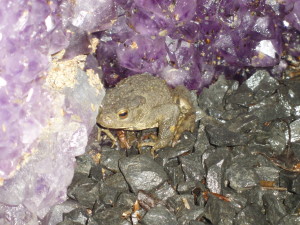 Here’s a toad I met at Jupiter Artland when I was writing the first draft. (In a wonderful cave made of purple crystals.) This toad was very helpful about posing for a photo, but didn’t move around enough for me to realise that TOADS DON’T HOP! So, one quick assumption I made years ago about how toads move, from my basic (basically wrong…) general knowledge about frogs and toads, resulted in a whole day’s work this week. Hence, the Toad Gait Scandal. Other things I’ve checked this week: But there was one other double check which resulted in even more than a day’s work, because it affected all three books of the trilogy. I had to double check a hare’s field of vision. I knew it would be wide, but I hadn’t realised how wide. It turns out that hares can see almost the whole 360 degrees around them, with just small blindspots to the front and back. Which makes them very hard to sneak up on, and meant I had to rewrite almost all my chase scenes. Perhaps I have a blindspot about wildlife research? So, that’s the fact checking done. Now I just need to have one more readthrough for silly typos, then the book will be ready for my editor next week. Which is very exciting. But even more exciting is that in a few months, the book will be ready for YOU! |
| Oct 03 |
Archive for the 'Uncategorized' CategoryWhy do we love shapeshifters?I LOVE stories about shapeshifters. I’ve made up a few shapeshifter stories myself: Rona, the selkie in the Fabled Beast Chronicles, regularly shifts from girl to seal and back again. And Rona was the first character, apart from Helen, who got her own point of view chapters and heroic action, in Storm Singing. Those scenes were some of the most challenging I’ve ever written, because I had to imagine myself as a creature of a completely different shape, with completely different abilities. Also thinking about why and when Rona would choose to shift from one shape to another was fascinating. (It usually came down to the use of hands …) Most of my shapeshifting knowledge and lore comes from old stories, and a remarkably high percentage of my favourite traditional tales are about shapeshifters. When I collected my favourite Scottish folktales and legends in Breaking the Spell, four out of the ten tales were about shapeshifting of some kind or another. In Girls, Goddesses and Giants, my collection of heroine stories, my favourite baddie (who is defeated by my favourite heroine) is a shapeshifting demon. And The Tale of Tam Linn, a retelling of my favourite Scottish fairy tale, illustrated by the magically talented Philip Longson, is also about shapeshifting – a boy who is stolen by the fairies, and then turned into lots of different Scottish animals (stag, wolf, wildcat…) to try to prevent a girl from rescuing him. Now, I’ve followed the logic of that path, and written a whole collection of shapeshifters. Serpents & Werewolves is a collection of fifteen of my favourite shapeshifter stories… illustrated by Francesca Greenwood’s stunning silhouettes. There’s a frog, who doesn’t get kissed, and a dragon, who does. There are several werewolves: a goodie werewolf (sort of), some baddie werewolves (definitely), and a werewolf cub, who was great fun to write. There are escaping fish and diving birds and tricky foxes, a very large serpent and a very tiny caterpillar, and all of them change shape as the story goes on… As with all the collections I write, some of these stories are ones I’ve loved and told for years. But some of them are new discoveries for me, as I researched shapeshifting tales, looking for stories that I wanted to get to know, from lots of different places, about lots of different animals. And I found, as always, that researching and writing a book threw up more questions than answers: Why does almost every culture in the world have stories about people changing into animals, and animals changing into people? Why do we want (or need) to imagine something human in animals, and something animal in humans? Why do we like to imagine ourselves with the strengths (and weaknesses) of animals? Is it shapeshifting a superpower or a curse? At a logical level (because I like my magic logical…) if you shift into something much bigger or much smaller than your human self, where does the extra bulk come from, or go to? And what animal or bird what would I like to turn into… ? My fascination with shapeshifting hasn’t ended yet! I’m still asking those questions, and I’m still writing about shapeshifters… I can’t give too much away just yet, but in the trilogy of novels I’m working on, the main character is a slightly reluctant shapeshifter… So right now I am having great fun writing about creatures much smaller and much faster than I usually do. So, there are more shapeshifters to come! And if you want a wee taste of the stories in Serpents and Werewolves, here is a sample put online by my publishers…. |
| Sep 04 |
Archive for the 'Uncategorized' CategoryWhat is it about wolves?I’ve now written six books with wolves inside, five of which have a wolf on the cover, and two of which even have a wolf in the title. |
| Nov 19 |
Archive for the 'Uncategorized' CategoryWhy retelling old stories is scary (and it’s not because of the wolf’s sharp teeth…)Retelling an old story which everyone already knows is a bit scary; retelling an old story almost no-one knows is even more of a responsibility. My first retelling of a well-known fairy tale – Little Red Riding Hood – has just been published. When I was writing it, I had to decide which bits of the many versions of Little Red I would weave together. I did a lot of research, then chose the elements which were most vivid and which worked best in my voice. So I hope I’ve retold a story which you will recognise, but which will also surprise you. A journalist recently asked me how I had changed the story, what spin or twist I had put in, but that wasn’t what I was aiming to do with this retelling. Every major plot element comes from one of the older tales, though I have told the story in my own words, and I’ve tried to make a few of the things which never made sense to me (why doesn’t she realise it’s a wolf in the bed, not her granny, for goodness sake? Can’t she tell the difference?) seem more plausible (she sees more of the wolf each time she lets extra light into the room: opening the curtains, lighting the fire etc.) But it’s a huge responsibility retelling a story like Little Red Riding Hood. Children already know it, and if you write something which differs from the version they know, they might think it’s wrong! (Which can prompt interesting discussions with kids about how traditional stories are passed on and changed.) Also, this book, with Celia Chauffrey’s gorgeous pictures, might over the years become some children’s very first experience of Red Riding Hood, so when they read other versions they might think my version is the right one and other versions are wrong… That’s a big and scary responsibility! But I’m very glad that this story of a tricksy, talking, toothy, people-eating wolf is a story most children already know. Because if they didn’t, they’d probably find it far too scary and gory to enjoy it! I’m now also retelling some stories which aren’t so well known: six animal tales from around the world (two already published, about a tortoise and a tiger, another four in the next couple of years, including a bear and a fox); a collection of Scottish folktales (coming out next summer, which contains stories I’ve never seen in other illustrated collections); and a collection of heroine stories from around the world (most of which are very obscure.) And that’s a completely different kind of responsibility. Because I do change stories when I tell them out loud. I deliberately change them so they make sense in my head, so they work in my voice, so they are dramatic in the way that I like a story to grab and hold the attention of an audience. Therefore the story I tell is never exactly as it was when it was written down, a hundred, a thousand or four thousand years ago. And that story, the one I tell out loud, the one I’ve changed to become my story, is the one I write down. I’m always quite honest about that, but now these versions are being printed and published, available on paper for anyone to read, forever… that is a serious responsibility. With Little Red Riding Hood, if I make a minor change, I know that kids will see another half dozen versions over the course of their reading lives, they will compare those different versions, realise there are many ways to tell a story and decide which is their favourite. But when they read my retellings of the untrustworthy Korean tiger or the Witch of Lochlann or Inanna tricking the god of wisdom, they might never see that story anywhere else. My version will be the only version they know. And that’s a really heavy responsibility. But I’m not worrying too much about it. These are great stories, I’m writing them as well as I know how, I’m really excited about sharing them and I want you to enjoy reading them. Then if you want to study them more deeply by reading the ancient originals, I’m quite happy to point you in the right direction! Here is the gorgeous front cover of LRRH, and I’ll update on you on the other retellings nearer the time! |
| Oct 04 |
Archive for the 'Uncategorized' CategoryUnexpected BearsI visited Traquair Maze again last week, filming an interview about Maze Running. I’ve been to the maze several times now, the first couple of times to research the novel, then another couple of times for press and publicity things (research is far more fun!) But this time, something had changed. |
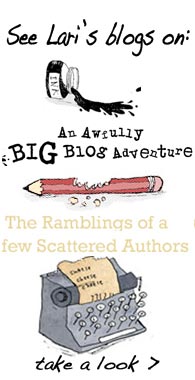

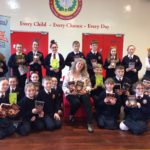
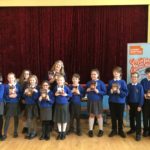



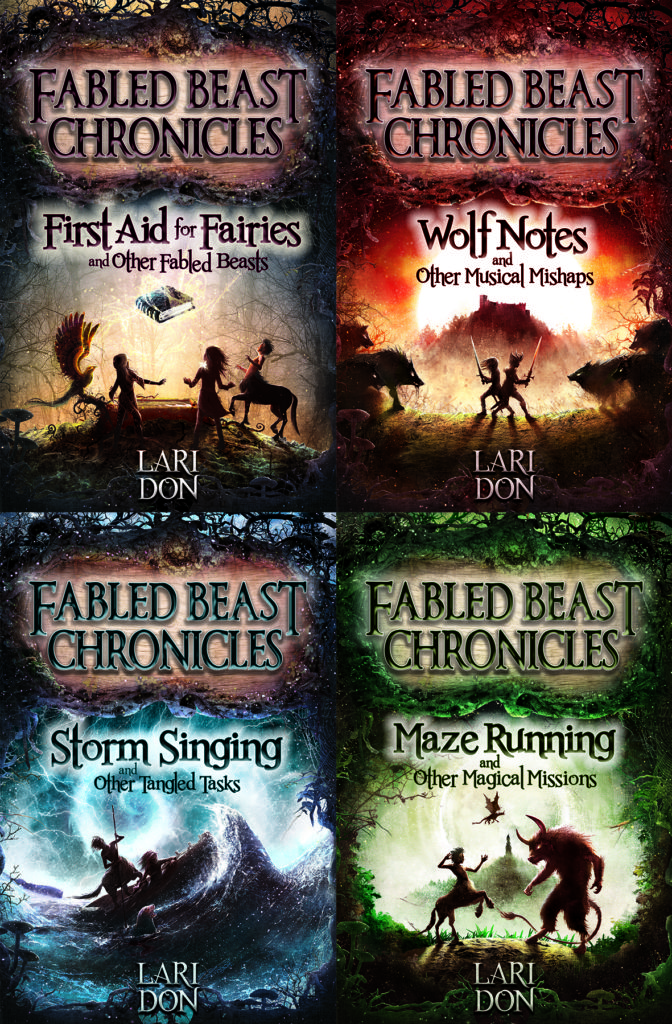
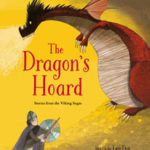
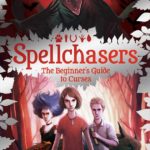
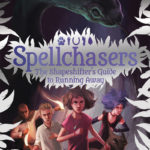

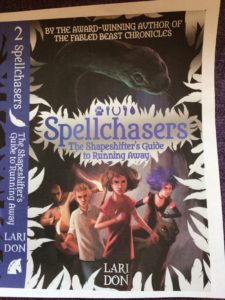
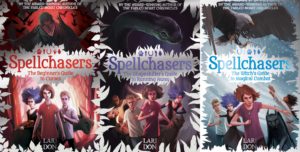
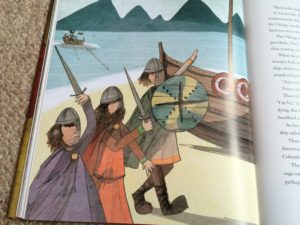
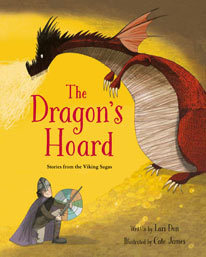
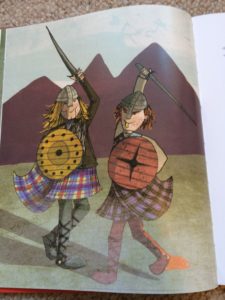
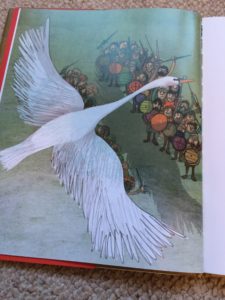
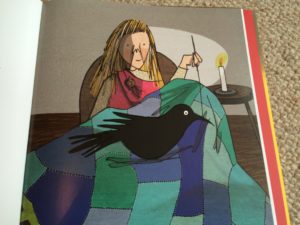
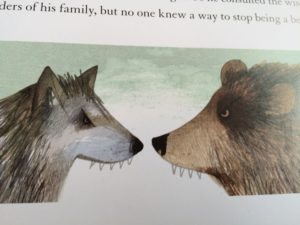
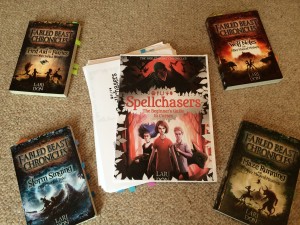
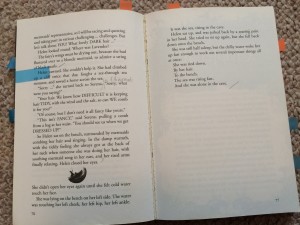
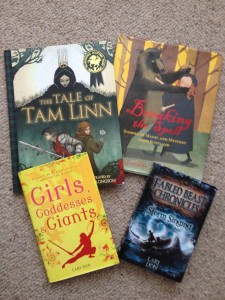
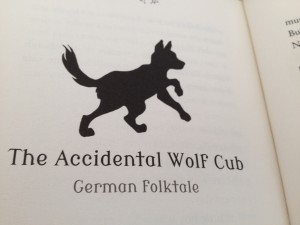
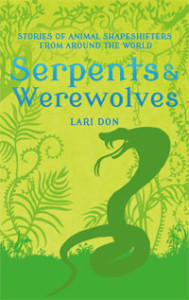
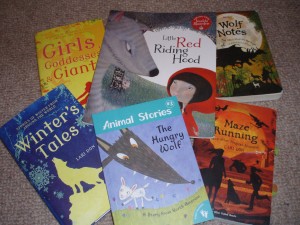
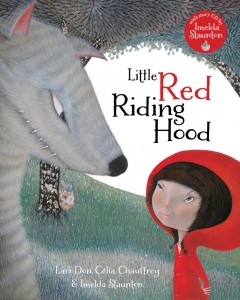
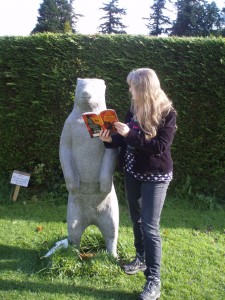
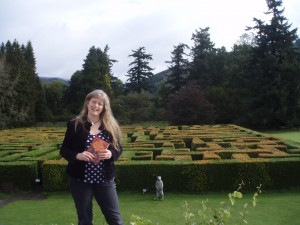
Recent Comments